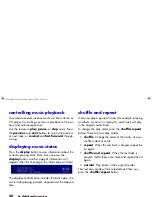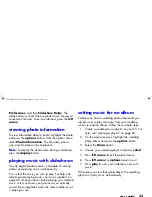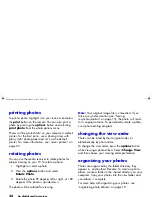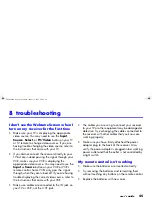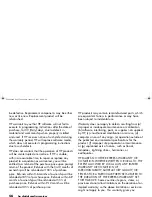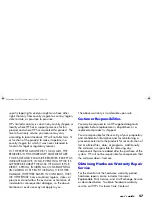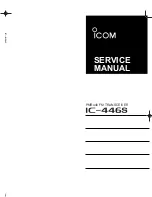
42
hp digital media receiver
method described in “network address: static or
dynamic?” on page 36 to find the static addresses in
use, and then pick an available address.
Note:
If you have other wireless PCs or devices,
determine all of the addresses before assigning one to
your receiver. Do not assign the same address to more
than one device.
For example, you can use 192.168.0.1 for your PC,
and 192.168.0.2 for your media receiver. Use a
netmask of 255.255.255.0 for both.
To configure the media receiver network settings for
wireless ad hoc mode and static addressing:
1. Press
options
2. Select
Network Setup
3. Set
Connection
to
Wireless (Ad Hoc)
4. Select
Address
5. Set
Configuration
to
static
6. Set the
IP Address
to
192.168.0.2
7. Set the
Netmask
to
255.255.255.0
8. Press
left arrow
to return to receiver options
9. Select
Apply Changes
to apply the network
changes
Follow the instructions that came with your wireless
network card for setting a static IP address of
192.168.0.1 on your PC.
wireless encryption
For security reasons, a wireless network can encrypt
the network packets broadcast between devices. This
type of encryption is called Wired Equivalent Privacy,
or WEP.
There are two levels of WEP encryption: 64 and 128
bit. You may have heard the numbers 40 and 104 bit
used in conjunction with WEP encryption. These are
just two different names for the same encryption
method. Because there has been no official
standardization of these terms, wireless vendors may
use either name.
Whether you choose 64 or 128 bit is up to you. You
must balance higher security versus slower network
performance.
Lexus.book Page 42 Monday, January 6, 2003 2:00 AM

